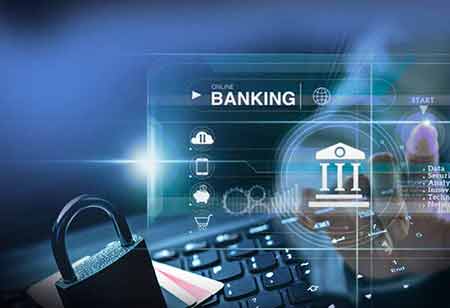THANK YOU FOR SUBSCRIBING

By
Banking CIO Outlook | Friday, August 26, 2022
Stay ahead of the industry with exclusive feature stories on the top companies, expert insights and the latest news delivered straight to your inbox. Subscribe today.
In anticipation of the transition to mobile banking, banks and financial institutions are responding swiftly to enhance the user experience.
FREMONT, CA: Banks must prioritize UX to satisfy customers' ever-changing expectations. In addition to greater convenience, flexibility, and security from their mobile app. Mobile banking applications will continue to excel at simple, transactional tasks, and banks that augment these digital experiences with a human touch will be able to ensure that these behaviors are maintained over time. Simple, convenient banking applications also enable consumers to invest within minutes and be accepted for a loan or an early paycheck with a few clicks.
Offering convenience to simplify financial lives
The most apparent advantage of mobile banking is accessing bank accounts anytime and from any location. Know-your-customer (KYC) requirements are used by mobile banking apps so that users can open a new account in minutes using only their smartphone, an ID, and social security number. For consumers, mobile applications avoid the hassle of driving to a physical branch and wasting time in a queue to cash a check, make a transfer, pay a bill, or make a deposit. Delivering a mobile banking app with built-in security features can increase customer trust and enhance UX.
Increasing security
Security is crucial because financial account information is among the most sensitive personal data available. Banks prioritize preventing identity theft and financial fraud, and mobile apps allow clients to personalize their security settings. Users can now use mobile apps to enhance their financial security by enabling or disabling foreign spending while traveling, freezing online spending to defend against compromised accounts, or simply setting spending limits to help budget and prevent overspending. Biometric security technologies such as two-factor authentication, fingerprint scanning, and facial or voice recognition assist banks in meeting customer data privacy and security demands.
Allowing personalization
Customers may finally stay on top of their finances by configuring in-app alerts for minimum balance requirements, upcoming bills, transaction notifications, and so on. Each user is unique and has different preferences that banks use their personal information to understand their specific preferences and financial goals and to deliver interactions and communications that empower them to achieve their financial objectives. With mobile apps, consumers can access additional features such as consulting directly with a financial advisor, contacting customer care, viewing how-to videos, and using budgeting tools. It is possible to create multiple savings accounts and monitor their progress directly from a mobile device. Users gain access to their financial information through a single, individualized mobile application.
THANK YOU FOR SUBSCRIBING
Be first to read the latest tech news, Industry Leader's Insights, and CIO interviews of medium and large enterprises exclusively from Banking CIO Outlook
I agree We use cookies on this website to enhance your user experience. By clicking any link on this page you are giving your consent for us to set cookies. More info



